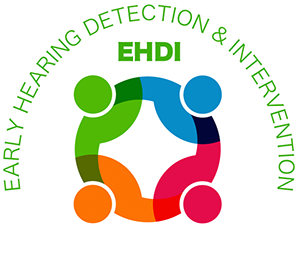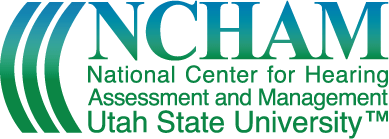Last Modified: 06/23/2023
Web Resource Guide: Checklist of Key Website Components
Web Resource Guide Checklist: Print Version
Use the website checklist to find valuable suggestions that could help to improve your State's EHDI website.
Content
Overview of State EHDI Program
- Describe your State's EHDI Program by including:
- Mission statement that defines "EHDI" (Early Hearing Detection and Intervention)
- Description "1-3-6 milestones" in association with EHDI process
- Provide information pertaining to the history of EHDI in your state, including legislative history
- Explain the importance of infant hearing screening
- Include contact information for your State's EHDI program
- How to contact your State's program coordinator, address, phone numbers, e-mail
- TTY information
- Contact for families who speak a language other than EnglishInformation for Various Stakeholders
Information for Various Stakeholders
Families
Include relevant information for parents, guardians, and/or caregivers:
- Explain the importance of having a child's hearing screening completed before 1 month of age
- Describe what to do if a parent or caregiver doesn't know his/her child's newborn hearing screening results
- Define and explain terms found in a screening result, such as "pass," "fail," "refer," or "incomplete"
- Describe what to do if a parent or caregiver has concerns about their child's hearing
- Explain the importance of continued hearing screenings for a child, throughout their childhood
- Provide a way to email questions and/or provide links to access resources, pay for services, find or locate parent support groups, learn more about assistive technology
- Provide information on where to find a pediatric audiologist
- Provide information and resources in other languages such as: PDF's, brochures, and web content
Healthcare providers
Include relevant information for hospital workers/midwives, medical homes/primary care doctors, and audiologists/ENTs:
- Describe the provider's role in conducting a hearing screening and following up on hearing screenings that have been completed
- Describe how the provider reports screening results to EHDI and other reporting procedures
- Explain how to deliver and explain hearing screening/diagnostic results to families
- Provide referral sites for rescreening, diagnostic evaluations, and early intervention, including contact information for these services
Early Intervention (IE) Providers
Include relevant information for Part C programs, Schools for the Deaf, private therapists, and audiologists:
- Describe the EI providers role in early hearing screening and diagnostic evaluations–how to partner with Part C
- Describe how EI providers report results to EHDI
- Explain the importance of audiological follow-up–how to partner with audiologists
- Provide contact information/links for families for various agencies and pediatric audiologists in the community
- Provide information about EI resources for children who are deaf/hard of hearing: family organizations, resource guides to help families learn about communication options, etc.
Information about the EHDI process
Screening
- Explain why screening is important for children
- Define screening and rescreening
- Describe when hearing should be screened and rescreened
- Describe who conducts screenings
- Provide information on where to obtain a screening
Diagnosis
- Define diagnostic evaluation
- Describe when diagnostic evaluation is needed
- Describe who should conduct diagnostic evaluations
- Provide information on where to obtain diagnostic evaluation
- Provide information about financial support for families in need of diagnostic evaluation (insurance, public programs)
Early intervention
- Define early intervention
- Identify who to contact (i.e. early intervention services)
- Provide information on a variety of communication options
Audiological Intervention
- Describe hearing devices (hearing aids, cochlear implants)
- Explain the importance of consistent, routine monitoring of hearing devices
Family support (etc.)
- Define family support
- Discuss why family support is important
- Provide information on family support organizations and other resources
Surveillance
- Discuss the role of the state EHDI program in surveillance to ensure children are screened
- Discuss the role of health care providers in reporting to the EHDI program
Design & Layout
Organization
- Allow any webpage to be read without the use of style sheets and still be organized
- Include headings that are consistent and can be identified by screen readers
- Provide important information first with an option to learn more
Style of Presentation
- Follow a consistent page design
- Have sufficient color contrast between background and text
- Provide consistency for all text elements
Navigation
- Provide several methods to locate a web page
- Provide a method that permits users to skip repetitive navigation links
Visual Media
- Reflect cultural diversity for visual content
- Use "ALT Text" for all images/graphics
- Provide captioning and descriptive text transcripts for audio and video
Browser Compatibility
- Function in multiple browsers
Accessibility
Keyboard Accessible
- Allow users to navigate through the website using only the keyboard
Links
- Provide links that make sense out of context
- Use links that work (no broken links)
Health Literacy
- Provide content with the appropriate reading level


